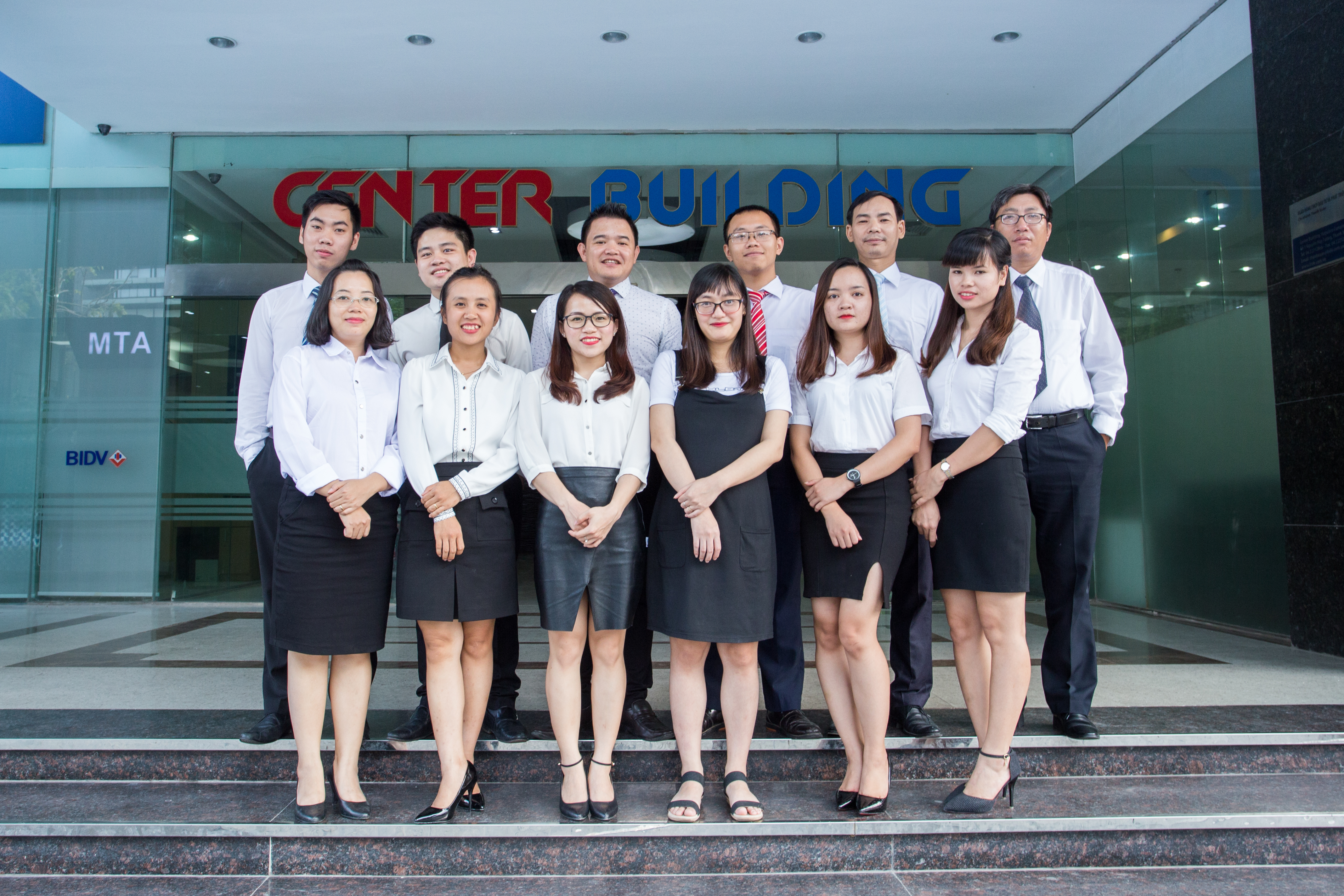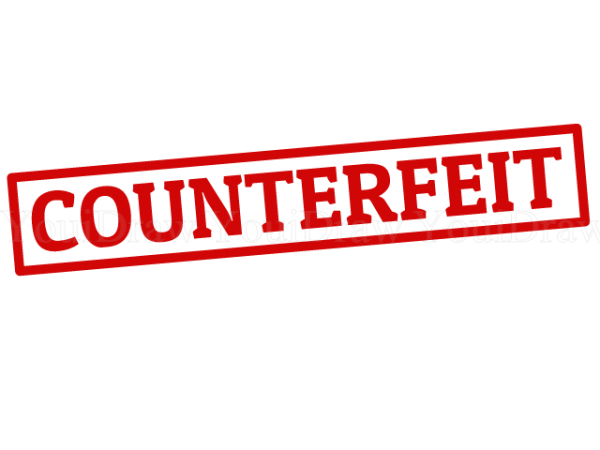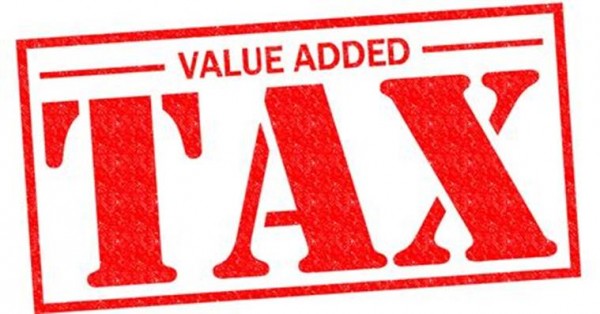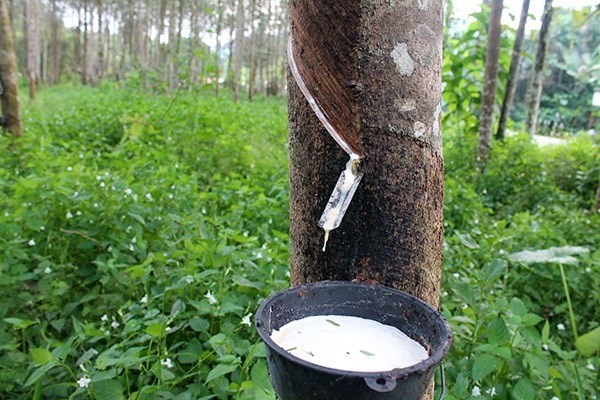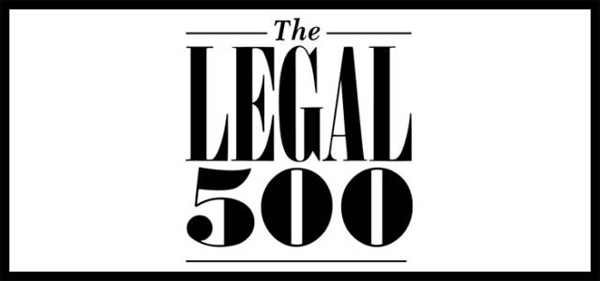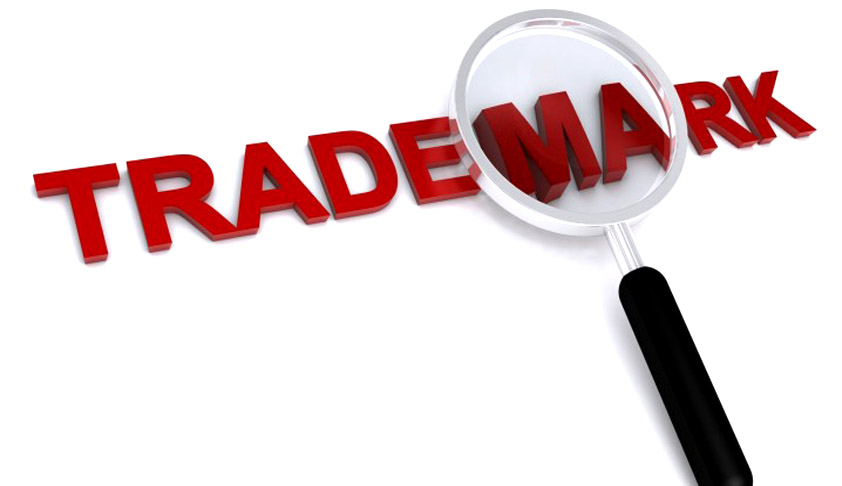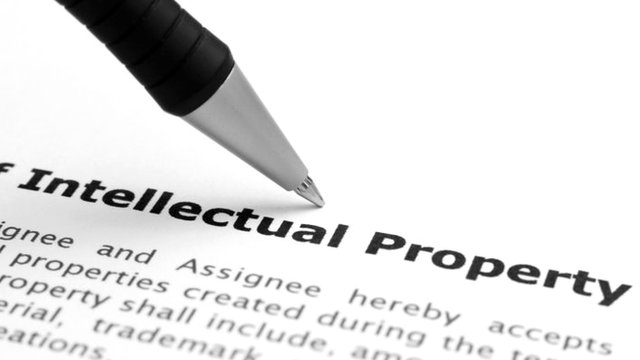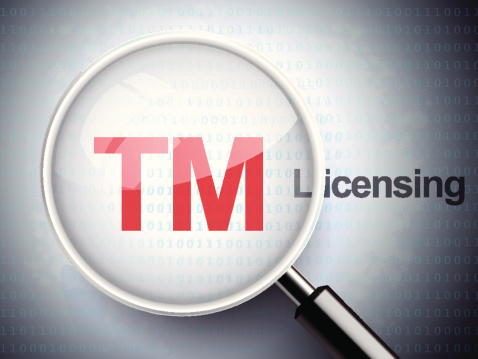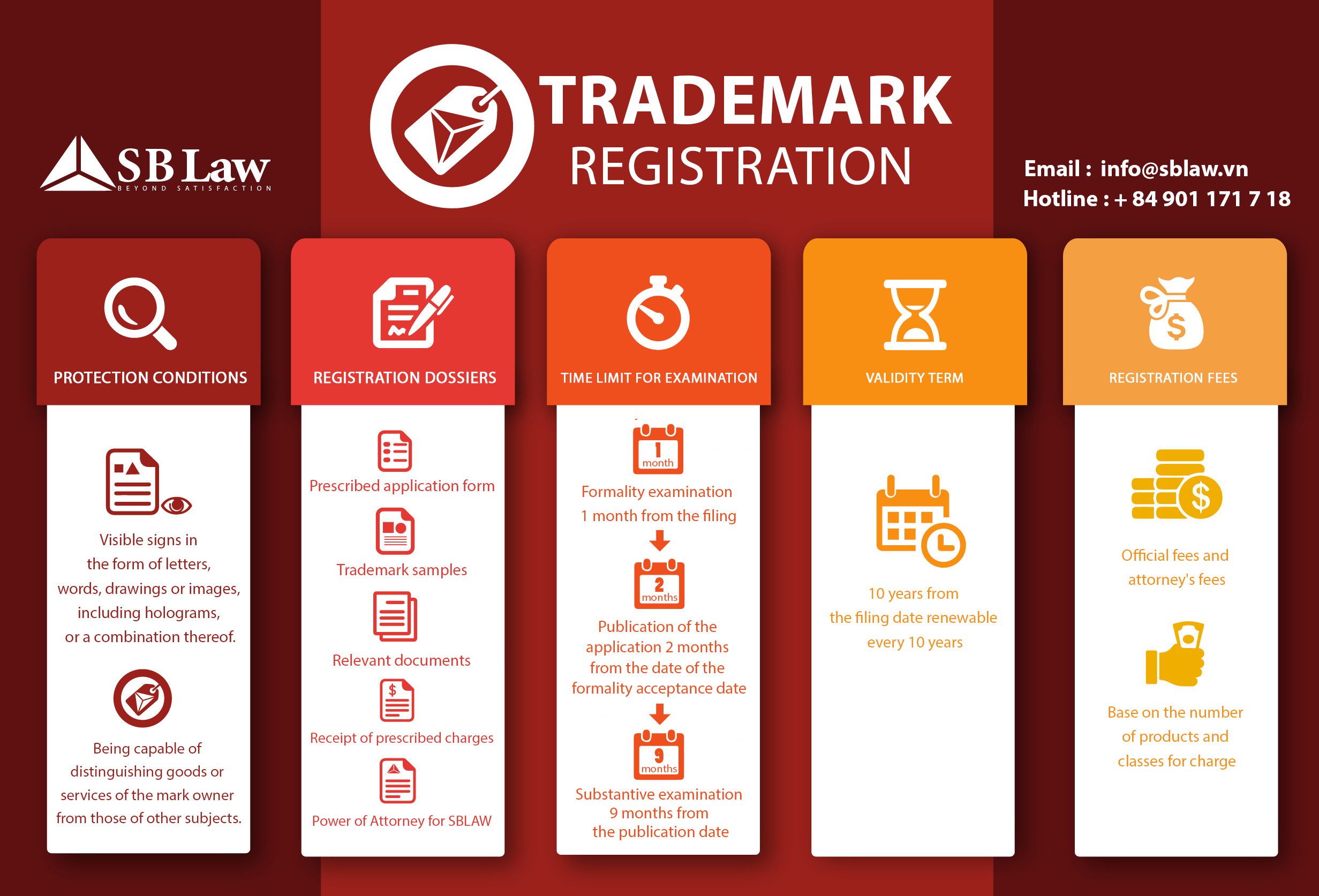
Trademarks registration information
Question: We are a USA company specialized in wine exportation. We would like to register a Trademark in Vietnam in order to extend our company to this market. We plan to register a logo, relating to the selling of bottles of wine.
We would like to know approximately the detailed and estimated cost for such a procedure.
Answer: Regarding your enquiries, we would like to advise you on procedure and our updated fee schedule in relation to the trademark registration proceeding in Vietnam as follows:
1. FEE SCHEDULE
1.1. Trademark information
– Trademark: Please specify
– Class: 35 – Selling of bottles of wine
1.2 Fee schedule
In Vietnam, multi-class application is applicable. The basic fees are calculated based on the number of class of goods/services (G/S) in each application as well as the number of products designated in each class in the application.
Below is the breakdown of charges for registering a trademark in Vietnam, in a smooth case, for your considerationSwitch Cisco | Router Cisco | Cisco chính hãng | Máy chủ Server
1.2.1. Trademark searches (Optional)
Trademark search for 01 trademark in one class
|
Description |
Official Fees (USD) |
Attorney’s Fees (USD) |
|
1. Fee for conducting search 01 trademark in one class (optional) |
– |
100.00 |
|
2. Bank charges |
20.00 |
|
|
Sub-total: |
120.00 |
|
|
5% VAT: |
6.00 |
|
|
TOTAL |
126.00 |
|
In words: One hundred and twenty six US Dollars
Note: The above-quoted fees include 5% VAT of our service charge, bank charges ($US 20.00)
1.2.2. Trademark registration
Trademark registration for one trademark in one class:
|
Description |
Official Fees (USD) |
Attorney’s Fees (USD) |
|
1. Fee for filing an application and issuing certificate forone class of goods/services within 6 items |
65.00 |
190.00 |
|
2. Fee for granting a registration certificate for one trademark in one class of G/S (without limitation of number of goods/services in each class) |
22.00 |
70.00 |
|
Communication cost |
30.00 |
|
|
Bank charge: |
25.00 |
|
|
Sub-total |
402.00 |
|
|
5% VAT: |
20.10 |
|
|
TOTAL |
422.10 |
|
In words: Four hundred twenty two US dollars and ten cents
Note: The above-quoted fees include 5% VAT of our service charge, bank charges ($US25.00) and actual communication costs ($US30.00). In case of any office action or possible opposition which may occur during the application proceedings, an additional charge may be incurred, upon your approval.
2. Procedure and timeline
2.1. The duration of a trademark searches is around 10-15 working days.
2.2. The duration for a trademark application from mature to proceed to registration is around 14-18 months from the filing date, involving these stages (1) examination as to formality and publication on the Gazette (3-4 months); (2) examination as to substance (9-12 months) and (3) issuance of registration certificate for the registered mark (2-4 months). Kindly note that the term for registration process normally takes longer to several months in practice due to the workload of the NOIP and the slow examination process by the NOIP’s examiner.
3. Required documents and information
– Name and address of the Applicant;
– List of Goods/Services
– Specimen of the applied mark (in e-copy only)
– An original Power of Attorney which is simply signed by the Applicant. No need notarization. Please be informed that a scanned/faxed copy of the Power of Attorney is acceptable upon filing provided that the original copy is submitted within 01 month from the filing date; One original Power of Attorney can be used for filling one or more applications.
We hope the above is of your assistance. Should you have any inquiry, please do not hesitate to contact us.
Quotation for copyright registration
Question: I am french author and would like to register copyright for story, please send me your quotation and procedure?
Answer: Regarding your enquiries, we would like to advise you on the procedure and our fee schedule in relation to the Copyright registration proceeding in Vietnam as follows:
1. FEE SCHEDULE
1.1 Information
– Type of work: Literary work (story)
1.2. Fee for filling 01 application for a literary work 220 USD.
5% VAT: 11 USD
Total: In words: 231 USD (Two hundred and thirty one US dollars).
Note: The above-quoted fees include 5% VAT
2. PROCEDURE AND TIMELINE
In Vietnam, the duration for a copyright application from mature to proceed to registration is 20 – 30 days from the filing date.
Kindly note that the term for registration process may take shorter or longer in practice due to the workload of the COV.
3. REQUIRED DOCUMENTS AND INFORMATION
– 02 Notarized copies of Certificate of Business Registration of the Owner (owner is company)
– 02 Notarized copies of the the Owner’s ID or passport (owner is individual).
– 02 copies of the author’s ID or passport
– 02 original Power of Attorney
– 02 statutory declarations of the author(s)
– 02 printings of each story (sealed by the company, N/A in case of personal owner)
– One of the following documents:
+ 02 declarations of the author (In case the author is the owner)
+ 02 assigned decision (In case the staff of the company/the owner is assigned tasks to create)
+ 02 contracts of lease of creating (In case the owner hired a third party to write)
Intellectual property services of SBLAW
SB LAW provides the full range of intellectual property services covering patent, trademark,
industrial design, copyright and domain name, enforcement and commercial exploitation of
IP rights.
Our group of IP Lawyers and technology specialists is always willing to assist
whether you are seeking advices how to begin protecting your unique ideas or to deal
with the most complex issues in the various aspects of IP.
Our IP practice covers not only Vietnam but also other countries in all over the world, especial in Southeast Asia, where our associated offices locate. We bring to Client valuable services for patentability research, trademark, industrial design, patent registration, copyright protection, watching and investigation of IP right Infringement, assistance in negotiation and obtaining IP Right Licensing, Franchising, Technology Transfer as well as commercial exploitation of IP Right Objects.
Our major clients:
Microsoft corporation (Representative office in Vietnam), ABB Asea Brown Boveri Ltd, Plus Stationery, Plus Corporation, Daio Paper, Sagami Chain Co., Ltd, Nitori Furniture, Oppo, Baidu, Caffe Bene, Vietsovpetro, Web Intertainment Limitted (Hk), Toa Paint, Total Gas, Daesang Holdings Co., Ltd (Kr), Vstv, Vtv, Vtc, Public Joint Stock Commercial Bank (Pvcombank), Vietinbank, Mbank, Kova, May10.
Major prosecution cases in Southeast Asia
– Helping numerous clients (especial companies from China, Taiwan, Korea, German, Indonesia and Russia) to register patents and trademarks in Southeast Asia.
– Helping top 500 companies in Vietnam to register trademark in Vietnam and globally.
– Acting for a Singaporean farmer product company to handle the infringement of their registered trademark in Vietnam;
– Acting for Vietnamese Television Online Company in negotiation with Sony Music
Entertainment relating to use of music works in Vietnam;
– Helping companies from to register trademark patents in Southeast Asia.
– We are top 10 IP firms having the most trademark applications in NOIP for years.
– Helping Copyright Association of Vietnam (VIETRRO) in handling copyright
infringement in Vietnam
– Acting for one of the most famous software company to handle copyright infringement in Vietnam
Our Awards
The professional performance and services provided by SBLAW has been highly appreciated by both local and international clients.
- SBLAW is proud to be awarded by ASIALAW Profiles – the world a reputable organization on ranking the leading domestic law firms in Asia Pacific. The ranking are based on the recommendations of in-house counsel at the world’s most prominent companies and financial institutions, as well as the leading lawyers, attorneys and solicitors in each legal market.
- In 2012, SBLAW received honor award by The Legal 500, the most comprehensive worldwide coverage currently available on legal services providers in over 100 countries. SBLAW emerged winner among many other leading law firms in the country for our excellent quality of legal service.
- In 2012, SBLAW continued to be ranked for the professional achievement and experience in finance and banking by IFRL1000 (the Guide to the World’s Leading Financial Law Firms).
- In November 2012, S& BLAW had one more feather to its cap, for being selected as one of the five law firms awarded by the People’s Committee of Hanoi for the achievement in consultancy to protect the rights and benefits of State and citizens.
- In 2013, Mr. Nguyen Thanh Ha – Managing Partner and Mr. Pham Duy Khuong – Executive Partner of SBLaw are ranked as Leading Lawyers in Vietnam by ASIA LAW.
- In 2013, 2014, 2015 SBLAW continued to be ranked for professional achievement and experienced in finance, banking and Intellectual Property by The Legal 500
- In 2016, SBLaw was upgraded to the top 2 of reputable law firms in the field of intellectual property in Vietnam by The Legal 500. In addition, Lawyer Pham Duy Khuong – Director of SBLaw is recommended as an excellent lawyer by Legal 500.
VN franchise rules under pressure to change
At the end of the 1990s, franchise was still a strange concept to most people in Việt Nam.
There were no opportunities to enjoy or even see the products and services of the world’s well-known brands in Việt Nam.
KFC, McDonald, Starbucks and Lotteria were not familiar names for Vietnamese youth. However, this has changed.
Now, you can start a beautiful morning with friends at a Starbucks or enjoy lunch with family at a KFC or Lotteria outlet. You could also purchase the latest Nike or Adidas products as well as those of other world famous brands at stores in Việt Nam.
This change has been the result of a very effective business model – franchise. After 40 years of Đổi mới (Renewal) and more than 19 years since its entry into the World Trade Organization (WTO), Việt Nam has emerged as one of the most attractive countries for investors and franchisors, with a population of over 90 million, 65 per cent of whom are under 35 years old, and a very dynamic consumer class with a strong preference for foreign brands.
Despite the global economic slowdown, thanks to its advantageous location, population size, and consumer habits, Việt Nam is now an ideal destination for many investors as well as franchisors.
According to the Vietnamese Ministry of Industry and Trade (MoIT), around 160 franchises have entered Việt Nam so far. This is just the franchises that are required to register with MoIT before officially commencing their operation pursuant to the 2005 Commercial Law.
The dominant business sectors for franchises are food services, retail, education, and entertainment. Food and beverage franchises account for 30 per cent of the registered franchises. The primary reason for the sustained increase in franchise activities in Việt Nam is the adoption of the 2005 Commercial Law and Decree 35/2006/NĐ-CP (later amended by Decree 120/2011/NĐ-CP), which, for the first time, provided a legal framework for franchising.
Foreign franchisors are required to register their franchising activities before granting franchises in Việt Nam. If they carry out their franchise activities in the country without a certificate of franchise registration, they will face administrative sanctions, including fines ranging from VNĐ10 million to 20 million (approximately US$439-878).
The franchisors must also consider the following conditions before registering their activities: The franchise network must have been in operation for at least one year.
As regards Vietnamese sub-franchisors:
– They must have operated the franchise business for at least one year before they initiate sub-franchising.
– The goods or services that are the subject of a franchise agreement must not be on the Government’s list of banned goods and services.
If they are on the list of goods and services subject to business restrictions, a special business license must be obtained before franchising is deployed.
A franchise registration dossier must comprise:
– An introduction of the franchise business containing the information as required by Circular 09/2006/TT-BTM guiding the commercial franchising registration;
– A copy of the certificate of business registration or a legally equivalent document;
– A copy of the certificate of protection of industrial property rights in Việt Nam or in foreign countries if the franchise includes a license of industrial property rights;
– Approval from the primary franchisor to the sub-franchisee in case of a sub-franchisor;
– Other documents required by the competent authority (including the franchise agreement or form of agreement).All documents issued in a foreign language must be notarized and legalized. The Vietnamese versions of such documents must also be notarized.
According to Decree 35, the franchisor has an obligation to provide the franchisee with the information regarding the franchise system, namely a copy of a form of franchise agreement and an introduction of the franchise business, at least 15 days before signing the agreement. The franchisor must also notify the franchisee of all substantial changes in the franchise system.
In case of a master franchise, in addition to providing the aforementioned information, the secondary franchisor must also provide a proposed franchisee with the following information in writing: (a) information about the franchisor which has granted the franchise; (b) contents of the master franchise contract; and (c) the manner in which secondary franchise contracts will be dealt with in the event of termination of the master franchise contract.
If the parties select application of the law of Việt Nam, the franchise contract may contain the following main items:
i. Contents of franchising;
ii. Rights and obligations of the franchisor;
iii. Rights and obligations of the franchisee;
iv. Price and periodic franchising fee, and payment method;
v. Term of the contract; and,
vi. Extension and termination of the contract, and dispute resolution.
The franchise contract must be made in Vietnamese. In the case of a franchise from Việt Nam to overseas, the parties must agree on the language of the franchise contract. Once registered, a franchisor must report any changes in the general information about the franchisor and/or changes affecting the relevant industrial property rights (i.e., changes in Part a) to the competent authority within 30 days after the date of change.
In addition, by January 15 every year, a franchisor must send an annual report to the competent authority on the matters contained in the disclosure document.
The above regulations regarding franchise activities in Việt Nam are provided in the 2005 Commercial Law. However, such regulations were issued in 2005 and there are some defects in this law: the definition of franchising is not clear for distinguishing between a trademark licence agreement or a technology transfer agreement; the conditions on franchisee and sub-franchisee do not offer sufficient protection for the rights of the sub-franchisees.
In addition, the method and measures for controlling and checking the franchisee’s activities by the franchisor are not clear.
Furthermore, numerous changes in the legal system, such as adoption of new investment and enterprise laws, the civil code, changes in the legislative mindset of lawmakers, have occurred in order to protect and ensure the freedom of enterprises as well as actual business conditions at a time Việt Nam is deepening its international integration.
Therefore, the need to revise the said regulations should be taken into account. In fact, the drafting of a new commercial law is underway and, according to MoIT, the draft will be submitted to the Government in 2017 and publicised to collect feedback before it is submitted to the National Assembly for passage in 2018.
The franchise business in Việt Nam has developed in a stable manner thus far. With a new commercial law to be adopted soon, this business will hopefully prosper further. — SBLAW
Phạm Duy Khương , Director, SB LAW firm
Read more at http://vietnamnews.vn/economy/350237/vn-franchise-rules-under-pressure-to-change.html#xj7E5hV9joCl6iJ7.99
Counterfeiting on the Rise in Vietnam
The Market Surveillance Agency (MSA) of the Ministry of Industry and Trade, one of the bodies enforcing intellectual property and compliance laws in Vietnamese market, has been very active in the course of 2016. Since the beginning of this year it has made nearly 150,000 inspections and found evidence of up to 88,000 violations, most of which are mislabeling, selling expired products, selling counterfeits and smuggled products (mostly unauthorized pesticides and cigarettes).
These numbers show not only activity of the MSA, but also attest the increase of illicit trade on the market, including counterfeited goods. To that end, the MSA has announced its intention to enhance coordination with other law enforcement authorities as well as the implementation of awareness-raising programs in order to fight the ever growing counterfeiting and smuggling business. One of the measures planned is increasing manpower before of the end of the year.
The authorities will have to focus their efforts because despite these increased efforts, combating counterfeiting and smuggling proves a very demanding task, and especially as such illicit importation has been on the rise in the recent period, while extensive and diverse border areas on the West and North of Vietnam are lacking personnel. In addition, the Agency has also declared that the leaders of local authorities in regions where counterfeiting and smuggling is thriving will be held accountable for absence of results in the fight against illicit trade. In this context, it is important that IP rights owners do not remain passive, and complement the authorities’ efforts by gaining a solid knowledge of the market and monitoring possible infringements of their brands.
Source VietnamBreakingNews.com
Valued Added Tax on IP Licensing in Vietnam
Until last month, it was understood that no Intellectual Property license was subject to value added tax VAT under Vietnamese law, benefiting from an exemption based on the principle that technology transfers, being beneficial to the Vietnamese economy, were to be encouraged. This, however, has changed after the Ministry of Finance issued Official Letters No. 10453/BTC-CST and No. 15888/BTC-CST.
Firewall Cisco| | Juniper switch | Router cisco | thiết bị mạng cisco | thiết bị chống sét | Bộ lưu điện UPS
Under the new guidance from the Ministry, transfer of the right to use a trademark is no longer exempted from VAT, and a 5% tax rate will now apply to these transactions. The rationale behind this change lies in the understanding that trademarks licenses do not form part of agreements which should fall under the technology transfer tax exemption. Businesses have expressed their disagreement with the change, though ultimately the cost of VAT will fall on the Vietnamese customers.
Official Letters are not pieces of legislation, but simply aim to clarify how the competent bodies will apply the regulations. Accordingly, it remains to be seen whether the taxing authority will apply the same principle to types of IP licenses other to franchises or other uses related to trademarks. It is not inconceivable that similar steps be taken in some cases of copyright licensing which may not be understood as falling under the umbrella of technology transfer.
Intellectual Property Right owners and licensors are encouraged therefore to review their IP licensing contracts in Vietnam to ensure that the relevant VAT is declared correctly for each royalty payment agreements. The new guidance partly applies retroactively, so that all license fees dated after November 7th 2016 would be subject to the new added VAT. Royalties which have not been paid and filed by that date are subject to the new guidance.
Acording to lexology.com
Vietnam rubber trademark announced
The Vietnamese rubber trademark, “Vietnam Rubber”, has been accredited by the National Office of Intellectual Property under the Ministry of Science and Technology.
The accreditation came after two years of administrative procedures. It covers 11 products classified into three categories – natural rubber, industrial rubber and rubber-wood.
Currently, the Vietnam Rubber Association has registered for intellectual property of the Vietnamese rubber products in the Indian, Chinese and Taiwanese markets and will continue procedures to legalize the trademark in other markets.
Ha Cong Tuan, Deputy Minister of Agriculture and Rural Development, said products with Vietnamese rubber labels reflect commitments to quality standards of domestic producers, which would provide stronger safeguards for Vietnamese exported goods.
The rubber sector experienced a tough year in 2016, given low global demand, high inventory levels and dropping prices of natural rubber products.
However, Vietnam has managed to maintain its second place in plantation productivity and third in output and exports worldwide.
Six businesses have been received the trademark certification, including Phuoc Hoa, Dong Nai, Hang Gon and Dau Tieng rubber companies.
Acording to english.vietnamnet.vn
SB LAW has been recommended in the intellectual property field in the year of 2017 by The Legal 500.
SB LAW is recommended by clients for its expertise in design patent applications and trade mark disputes. The practice also handles infringement litigation in the Vietnamese courts; Pham Duy Khuong, who ‘provides short and clear responses’, successfully represented Purolite and ABB Vietnam Transformer in respective trade mark infringement cases.
http://www.legal500.com/c/vietnam/intellectual-property/local-firms
Merry Christmas and Happy new year 2017
SBLAW wish you all a Merry Christmas and a Happy New Year 2017
Quotation for new trademark application in Vietnam and Thailand
SBLAW would like to advise you of the procedure and our fee schedule in relation to the trademark registration proceeding in Vietnam as follows:
1. SCOPE OF WORKS
In case SBLaw is your representative, we will have obligations as below:
- Providing legal advice on registration of the applied works in accordance with the IP Law of Vietnam before filling;
- Preparing all neccesary forms/documents related to trademark registration procedure in Vietnam for you to sign;
- Preparing the dossier and filing the same with the National Intellectual Property Office;
- Reporting on the status of the application for you (corresponding to each stage of examination procedure in Vietnam);
- Reporting, providing legal advice and handling the refusal of National Intellectual Property Office (if any) during application procedure;
- Receiving and handing Certificate of Registration for you;
- Providing legal advice on using trademark after protecting;
- Updating the expiry date of this registration into our reminder system and will remind you to renewal day in time.
2. FEE SCHEDULE
In Vietnam, multi-class application is applicable. The basic fees are calculated based on the number of class of goods/services (G/S) in each application as well as the number of products designated in each class in the application.
As your communication, we noted that you would like to register the trademarks as follow:
| No. | Trademarks | Classes/ List of goods/service |
| 1 | Trademark |
Class 09: Solenoid valves (electromagnetic switches); Pressure sensitive switches; Pressure sensor; Water level sensor; Flow sensors; Switches, electric; Electromagnetic coils; Buzzers; Electrolysers.Class 11: Filters for drinking water; Showers; Water softening apparatus and installations; Water sterilizers; Water heaters; Cooling installations for water. |
| 2 | Trademark |
2.1 Time for conducting trademark search and registration
| Nation | Trademark search | Trademark registration |
| Vietnam | 5-7 days | 14-18 months |
| Thailand | 7-10 days | 14-18 months |
2.2. Fee for conducting trademark search and registration
Below is the breakdown of charges for registering a trademark in Vietnam, in a smooth case, for your consideration:
A.Fee for conducting 02 trademark searches and registration in Vietnam
Fee for conducting 02 trademarks searches
| Description | Official Fees
(USD) |
Attorney’s fees
(USD) |
| Fee for conducting 02 trademark searches for 02 classes per trademark before filing application | – | 70.00 x 2 x 2
= 280.00 |
| Sub-Total: | 280.00 | |
| 5% VAT: | 14.00 | |
| TOTAL: | 294.00
Two hundred and ninety four US dollars |
|
Fee for registration for 02 trademarks
| Description | Official fees
(USD) |
Attorney’s fees
(USD) |
| Fee for registration of 02 marks for first class of goods/services with up to 6 items (included the fee for filling, publication and granting TMRC) | 45.00 x 2
= 90.00 |
180.00 x 2
= 360.00 |
| Fee for registration of 02 marks 01 additional class of goods/services (included fee for filling, publication and granting TMRC) | 30.00 x 2
= 60.00 |
155.00 x 2
= 310.00 |
| Fee for each additional goods from 7th one. | 5.00 x 2 x 4
= 40.00 |
10.00 x 2 x 4
= 80.00 |
| Sub-Total | 940.00 | |
| 5% VAT | 47.00 | |
| TOTAL | 987.00
Nine hundred and eighty seven US dollars |
|
Note: The above-quoted fees include Official Fees and Attorney Fees, 5% VAT; do not include additional fees in case of refusal in formality examination being opposed by the third party or refusal in sustainable examination due to similarity/to identity with other trademarks which were already registered. In case of any office action or any possible opposition which may occur during the application proceedings, an additional charge may be incurred, upon your approval.
1. Fee for conducting 02 trademark searches and registration in Thailand
Fee for conducting 02 trademarks searches
| Description | Official Fees
(USD) |
Attorney’s fees
(USD) |
| Fee for conducting 02 trademark searches for 02 classes/01 trademark before filing application | 1,400.00 | 500.00 |
| Communication cost: | 30.00 | |
| Bank charge: | 30.00 | |
| Sub-Total: | 1,960.00 | |
| 5% VAT: | 98.00 | |
| TOTAL: | 2,058.00
Two thousand and fifty eight US dollars |
|
Fee for registration for 02 trademarks “” and
| Description | Official fees
(USD) |
Attorney’s fees
(USD) |
| Fee for registration of 02 marks for two classes of goods/services with up to 2 items (included the fee for filling, publication and granting TMRC) | 3,188.00 | 1,380.00 |
| Fee for registration for 02 marks for 14 additional items (included fee for filling, publication and granting TMRC) (01 services) | 42.00 x 2 x 14
= 1,176.00 |
– |
| Communication cost: | 30.00 | |
| Bank charge: | 30.00 | |
| Sub-Total | 5,804.00 | |
| 5% VAT | 290.20 | |
| TOTAL | 6094.20
Six thousand and ninety four US dollars and twenty cents |
|
Note: The above-quoted fees include Official Fees and Attorney Fees, 5% VAT; do not include legalized fee, additional fees in case of refusal in formality examination being opposed by the third party or refusal in sustainable examination due to similarity/to identity with other trademarks which were already registered. In case of any office action or any possible opposition which may occur during the application proceedings, an additional charge may be incurred, upon your approval.
2.3 Total fee:
| Works | Fee |
| Fee for conducting 05 trademark searches and in Vietnam | |
| Fee for registration for 05 trademarks in Vietnam | |
| TOTAL | 9,433.00 |
Note: In case, Japan company will communicate and pay to us, please pay to us communication cost (120$) and bank charge (120$).
3. PROCEDURE AND TIMELINE
The duration of a trademark application is around 14-18 months – from the filing date to the actual receipt of the registration. Kindly note that the term for registration process in practice normally takes up to several months longer due to the workload of the NOIP and the slow examination process by the NOIP’s examiner. The process involves these stages (i) formal examination (1-2 months), (ii) publication in the Gazette (2 months); (iii) examination as to substance (10-12 months) and (iv) issuance of registration certificate of the registered mark (1-2 months).
4. REQUIRED DOCUMENTS AND INFORMATION
4.1. General Documents:
- Name and address of the Applicant
- List of Goods/Services (available);
- Specimen of the applied mark (available);
- An original Power of Attorney which is simply signed by the Applicant (form of SBLAW)
4.2 Special Documents:
– In Thailand: POA which is legalized (SBLAW will proceed)
Hong Kong – Quotation for new trademark application
SBLAW would like to advise you of the procedure and our fee schedule in relation to the trademark registration proceeding in Hong Kong as follows:
- SCOPE OF WORKS
In case SBLaw is your representative, we will have obligations as below:
- Providing legal advice on registration of the applied works in accordance with the IP Law of Hong Kong before filling;
- Preparing all neccesary forms/documents related to trademark registration procedure in Hong Kong for you to sign;
- Preparing the dossier and filing the same with the National Intellectual Property Office;
- Reporting on the status of the application for you (corresponding to each stage of examination procedure in Hong Kong);
- Reporting, providing legal advice and handling the refusal of National Intellectual Property Office (if any) during application procedure;
- Receiving and handing Certificate of Registration for you;
- Providing legal advice on using trademark after protecting;
- Updating the expiry date of this registration into our reminder system and will remind you to renewal day in time.
2. FEE SCHEDULE
In Hong Kong, multi-class application is applicable. The basic fees are calculated based on the number of class of goods/services (G/S) in each application as well as the number of products designated in each class in the application.
As your communication, we noted that you would like to register the trademarks as follow:
| Trademark | Classes/ List of goods/service |
| Trademark | Class 36: Real Estate management; Repair costs Evaluation [financial appraisal]; Accommodation bureaux [apartments]. Class 42: Architecture; Architectural consultation; Design of interior Decor; Construction Drafting; Urban planning. |
2.1 Time for conducting trademark search and registration
| Nation | Trademark search | Trademark registration |
| Hong Kong | 15 – 25 days | 09 -12 months |
2.2. Fee for conducting trademark search and registration
Below is the breakdown of charges for registering a trademark in Hong Kong, in a smooth case, for your consideration:
Fee for conducting 01 trademark search
| Description | Official Fees
(USD) |
Attorney’s fees
(USD) |
| Fee for conducting 01 trademark search for 02 classes/01 trademark before filing application | 200.00 | 150.00 |
| Communication cost: | 30.00 | |
| Bank charge: | 30.00 | |
| Sub-Total: | 410.00 | |
| 5% VAT: | 20.50 | |
| TOTAL:
In words |
430.50
Four hundred thirty US dollars and fifty cents |
|
Fee for registration for 01 trademark
| Description | Official fees
(USD) |
Attorney’s fees
(USD) |
| Fee for registration of 01 mark for two classes of goods/services with up to 2 items (included the fee for filling, publication and granting TMRC) | 600.00 | 300.00 |
| Communication cost: | 30.00 | |
| Bank charge: | 30.00 | |
| Sub-Total | 960.00 | |
| 5% VAT | 48.00 | |
| TOTAL | 1,008.00
One thousand and eight US dollars |
|
Note: The above-quoted fees include Official Fees and Attorney Fees, 5% VAT, Communication cost and Bank charge; do not include legalized fee, additional fees in case of refusal in formality examination being opposed by the third party or refusal in sustainable examination due to similarity/to identity with other trademarks which were already registered. In case of any office action or any possible opposition which may occur during the application proceedings, an additional charge may be incurred, upon your approval.
2.3 Total fee:
| Works | Fee |
| Fee for conducting 01 trademark searche in Hong Kong | 430.50 |
| Fee for registration for 01 trademarks in Hong Kong | 1,008.00 |
| TOTAL | 1,438.50 |
In words: One thousand four hundred thirty eight US dolllars and fifty cents
3. PROCEDURE AND TIMELINE
The duration of a trademark application is around 09 – 12 months – from the filing date to the actual receipt of the registration. Kindly note that the term for registration process in practice normally takes up to several months longer due to the workload of the NOIP and the slow examination process by the NOIP’s examiner. The process involves these stages (i) formal examination (1-2 months), (ii) publication in the Gazette (2 months); (iii) examination as to substance (10-12 months) and (iv) issuance of registration certificate of the registered mark (1-2 months).
4. REQUIRED DOCUMENTS AND INFORMATION
- Name and address of the Applicant
- List of Goods/Services (available);
- Specimen of the applied mark (available);
- An original Power of Attorney which is simply signed by the Applicant (form of SBLAW)
Vietnam – Quotation for Trademark registration claiming priority right
SBLAW would like to advise you on the procedure and our fee schedule in relation to the trademark registration proceeding in Vietnam as follows:
1. FEE SCHEDULE
1.1 Trademark information
– Trademark:
– Class 29
– PRC priority application in Australia
1.2 Fee schedule
In Vietnam, multi-class application is applicable. The basic fees are calculated based on the number of class of goods/services (G/S) in each application as well as the number of products designated in each class in the application.
Below is the breakdown of charges for registering a trademark in Vietnam, in a smooth case, for your consideration:Switch Cisco | Router Cisco | Cisco chính hãng | Máy chủ Server
1.2.1. Trademark search (Optional)
The fee for trademark registration in Vietnam is counted based on number of classes and items within each class. Your Australian trademark includes 77 additional goods/items from 6th one which shall be further charged. Therefore, you could file Vietnam trademark with the same items as filed in Australia or you could delete items to save your budget.
| Description | Official Fees
(USD) |
Attorney’s fee
(USD) |
| 1. Fee for conducting one trademark search in one class (optional) | — | 80.00 |
In words: Eighty US dollars only
Note: The above-quoted fees do not include 5% VAT of our service charge, bank charges ($US20) and actual communication costs ($US30-$US40).
1.2.2. Trademark registration
| Description | Official Fees
(USD) |
Attorney’s fee
(USD) |
| 1. Fee for filing an application for one class of goods within 6 items*
– Fee for 77 additional goods from the sixth one |
40.00
7.00 x 77 = 539.00 |
150.00
3.00 x 77 = 231.00 |
| 2. Fee for priority claims of one trademark application | 40.00 | 80.00 |
| 3. Fee for granting certificate for one class | 25.00 | 30.00 |
|
Total |
1,135.00
One thousand one hundred and thirty five US dollars only |
|
Note:
- The above-quoted fees do not include 5% VAT of our service charge, bank charges ($US30) and actual communication costs ($US30-$US40). In case of any office action or possible opposition which may occur during the application proceedings, an additional charge may be incurred, upon your approval.
- Fee for translating priority documents from English into Vietnamese is $US7/100 words
2. Procedure and timeline
The duration of a trademark searches is around 10-15 working days.
The duration for a trademark application from mature to proceed to registration is around 14-18 months from the filing date, involving these stages (1) examination as to formality and publication on the Gazette (3-4 months); (2) examination as to substance (9-12 months) and (3) issuance of registration certificate for the registered mark (2-4 months). Kindly note that the term for registration process normally takes longer to several months in practice due to the workload of the NOIP and the slow examination process by the NOIP’s examiner.
3. Required documents and information
- Name and address of the Applicant;
- List of Goods/Services
- Specimen of the applied mark (in e-copy only) (available)
- An original Power of Attorney which is simply signed by the Applicant. Please be informed that a scanned/faxed copy of the Power of Attorney is acceptable upon filing provided that the original copy is submitted within 01 month from the filing date.
- A notarized priority claiming documents (A notarized copies of the initial application to evidence the ground for enjoying the right of priority)
Vietnam- Quotation for Recordal of change name

SBLAW would like to advise you on procedure and our fee schedule for Recordal of change applicant’s name for trademark applications/registrations in Vietnam as following:
1. Fee Schedule
As stipulated, if you have multiple trademarks in Vietnam, you could record change the name for all trademark applications simultaneously with one application. Similarly, it is possible to change the name for trademark certificates simultaneously with one application. However, fee for recordal will be calculated upon the number of trademark applications/registration.
| Description | Official Fees
(USD) |
Attorney’s fee
(USD) |
| Recordal of change the name for each trademark application/registration | 20.00 | 80.00 |
| 5% VAT of Attorney fee | 5.00 | |
| Communication cost | 30.00 | |
| Bank charge | 30.00 | |
| Total: | 165.00 | |
In word: One hundred and sixty five US dollar
2. Procedure and timeline
Normally, the recordal of change the applicant’s name will be processed within 4-6 months from the filling date.
3. Required documents:
- Certified copy of legal documents proving changing name of the Applicant or Declaration about changing name (notarization).
- The original Power of Attorney which is simply signed by the Applicant. Please further note that a scanned/faxed copy of the POA is acceptable upon filing provided that the original copy is submitted within 01 month from the filing date.
- The Original trademark Certificates (in case of changing the owner’s name of registration).
Vietnam – Quotation for Trademark Registration
SBLAW would like to advise you on the procedure and our fee schedule in relation to the trademark registration proceeding in Vietnam as follows:
1. TRADEMARK INFORMATION
Trademark
List of goods/services Oil absorbent bag
Applicant
2. FEE SCHEDULE
In Vietnam, multi-class application is applicable. The basic fees are calculated based on the number of class of goods/services (G/S) in each application as well as the number of products designated in each class in the application.
Below is the breakdown of charges for search and registration for one trademark in a smooth case, for your consideration:
Fee for searching of 01 trademark/01 class
Description Official Fees
(USD) Attorney Fees
(USD)
Fee for conducting 01 trademark search in 01 class (optional) – 150.00
Communication Cost 30.00
Bank charge 30.00
Subtotal 210.00
5% VAT 10.50
TOTAL 220.50
Two hundred twenty US Dollars and fifty cents
Fee for registration of 01 trademark/01 class
Description Official Fees
(USD) Attorney Fees
(USD)
Fee for registration application for 01 class of G/S with up to 6 products/services in one class (including fee for granting certificate) 80.00 200.00
Communication Cost 30.00
Bank charge 30.00
Subtotal 340.00
5% VAT 17.00
TOTAL
In words: 357.00
Three hundred fifty seven US Dollars
Note: The above-quoted fees include Official Fees and Attorney Fees, 5% VAT; do not include additional fees in case of refusal in formality examination or being opposed by the third party or refusal in sustainable examination (e.g: due to similarity/to identity with other trademarks which were already registered…) In case of any office action or any possible opposition which may occur during the application proceedings, an additional charge may be incurred, upon your approval.
3. PROCEDURE AND TIMELINE
The duration of a trademark search is around 10-15 working days.
The duration of trademark application is around 14-18 months – from the filing date to the actual receipt of the registration. The process involves these stages (1) formal examination and publication in the Gazette (3 months); (2) examination as to substance (9 months) and (3) issuance of registration certificate of the registered mark (2 months). Kindly note that the term for registration process in practice normally takes up to several months longer due to the workload of the NOIP and the slow examination process by the NOIP’s examiner.
4. REQUIRED DOCUMENTS AND INFORMATION
– Name and address of the Applicant;
– List of Goods/Services;
– Specimen of the applied mark (soft version);
– An original Power of Attorney which is simply signed by the Applicant (our form in attachment) (Please be informed that a scanned/faxed copy of the Power of Attorney is acceptable upon filing provided that the original copy is submitted within 01 month from the filing date).




